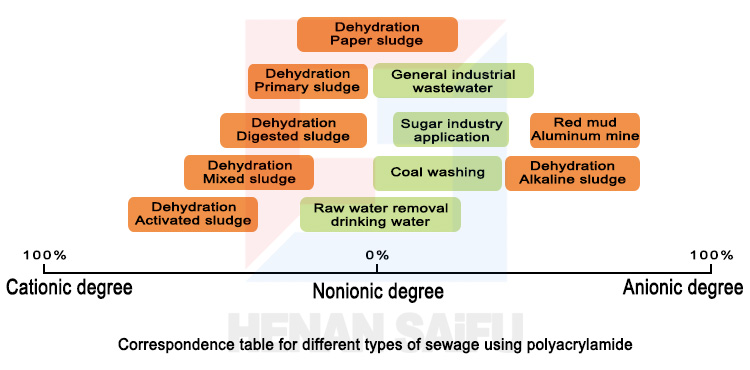Classification of polyacrylamide
Polyacrylamide can be divided into nonionic, anionic and cationic polyacrylamide.
Non-ionic: (NPAM), neutral, uncharged.
① Neutral or acidic sewage is more commonly used, such as mineral processing wastewater, stone factories, engineering mud, and printing and dyeing factories.
② The flocculation effect mainly relies on a large number of molecular groups on the molecular chain to separate suspended matter and water through the action of adsorption and bridging.
③ No hydrolysis or a small amount of hydrolysis occurs, the degree of hydrolysis is low, the molecular weight is relatively small, and the water permeability is high.
Anion: (APAM), negatively charged, alkaline, distinguished by the degree of hydrolysis.
Suitable for use in weakly alkaline or neutral sewage, inorganic sewage. Sand washing, coal washing, and mineral processing.
The larger the molecular weight, the longer the linear polymer chain, the more the number, the stronger the force, the greater the viscosity, and the effect will be relatively better.
In flocculation sedimentation/pretreatment, it is usually used in conjunction with a coagulant, and can be used in conjunction with an air flotation machine.
Cation: (CPAM), positively charged, acidic.
① Organic sewage flocculation sedimentation/sludge dehydration: domestic sewage, slaughterhouse wastewater, food wastewater (organic matter is generally negatively charged), generally used in the sludge dehydration stage.
② The principle of flocculation is to adsorb suspended particles through electrical neutralization and electrostatic attraction.
③ Differentiate by ionicity and molecular weight.
The higher the ionicity, the greater the charge density. It should be noted that the higher the ionicity, the better the sludge dehydration effect. It should be determined according to the water quality and equipment on site.

